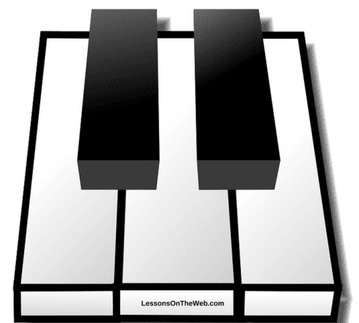|
Scales are the building blocks of music so it is said, and I believe it. Scales are like words in language. You can't speak the language if you don't know the right words to use to express your ideas. Same with music and scales, especially when you want to write and play your own music. If you've just started taking piano lessons or even if you have been studying for awhile, think back to one of the first things you probably are learning, or learned - a C Major Scale. In fact, the first note you probably learned was Middle C, and in so doing, you learned the 1st note of the C Major Scale. How about any other types of C scales that you might know...can you think of one? What about a C Minor Scale? Major and Minor scales are very common and are the first kind of scales that we learn. Both Major and Minor Scales have 8 notes in them, and the last note is an octave (8 notes) higher than the first note, yet it is the same note. Once you've learned your Major and Minor Scales, you'll start to learn other types of scales. There really are quite a few different types of scales - here are a few of them.
Chromatic Scales are very different from the more traditional Major and Minor Scales that most of us know. They are fun to play too, once you get the concept down. If you remember, traditional scales have 8 notes in them, and that 8 note distance between the bottom and the top note is known as an octave. Chromatic Scales have 12 notes in them, not 8. You will still play from the bottom or first note up to the note that is an octave higher, but you will play every single note in between the two, thus making each scale containg 12 steps, instead of 8. For example: A C Major Scale would include the following notes: C, D, E, F, G, A, B, C - with no sharps or flats on any of the notes. A C Chromatic Scale would include the following notes:  Do you see the additional notes in this Chromatic Scale that aren't in the regular Major Scale? Can you tell what the difference is? When you play a Chromatic Scale, you play every single note starting from the first one. So essentially, you play every 1/2 step, instead of skipping some like you do in a Major or Minor Scale. Because you play every single 1/2 step in the scale, you end up playing 12 notes, 4 additional ones, instead of just 8. You'll play every black and white key between your first and last notes. That's it! *These 1/2 steps are also called "semi-tones" Were you aware before that when you were playing a Major or Minor Scale that you skipped some of the black keys? That's because not all of your notes are just 1/2 step apart - some are whole steps apart. This is one of the biggest differences between Major & Minor Scales, and Chromatic Scales. Now that you know what a Chromatic Scale is - a scale that has 12 notes in it, and where all of the notes are 1/2 step apart from each other; you're ready to learn how to play them on your piano. Warm up a little by playing your C Major Scale a couple of times, and then join me in this tutorial on how to play chromatic scales on your piano. We'll learn at the keyboard together.
Stacy
9/9/2021 12:08:37 pm
Hello, when you talk about 8 notes, you include both C’s (C,D,E,F,G,A,B,C) but when you mention the chromatic scale, you only mention 12 notes, but including both C’s, that would be 13 (C,#,D,#,E,F,#,G,#,A,#,B,C) Note that I used # for both sharps and flats due to keyboard constraints. Should it be 7 & 12 or 8 & 13? If not, why not? It seems like everyone plays both C’s in both of these scales. I don’t understand why the numbering rules are different from one to the other. Any light you may be able to shed on this would be greatly appreciated.
Reply
Leave a Reply. |
AuthorMost blogs written by Archives
June 2020
Categories
All
|



 RSS Feed
RSS Feed